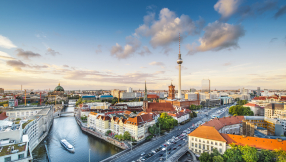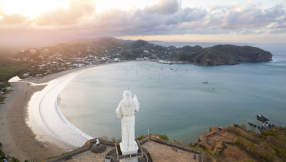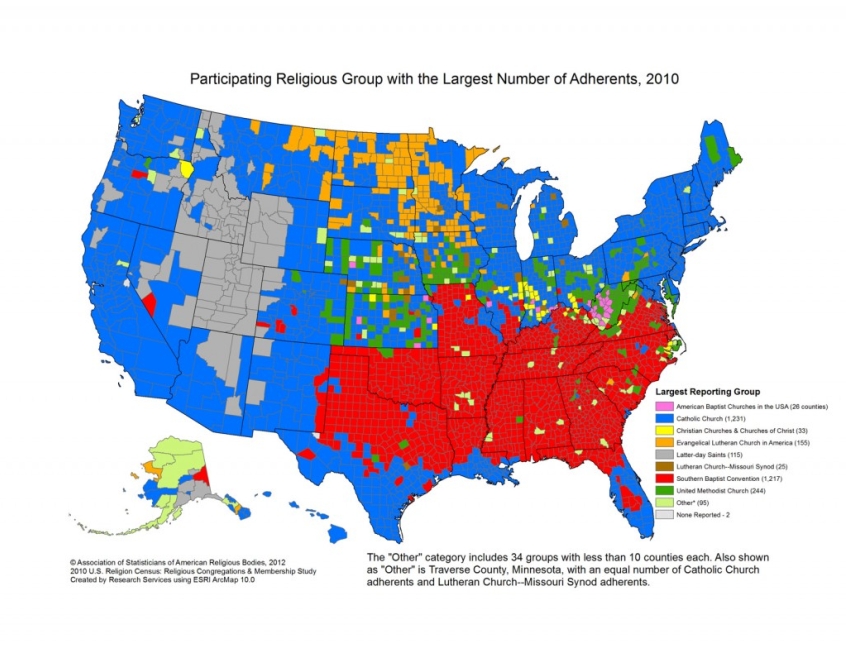
From even the briefest overview of almost any selection of news media, television programs, books, films, or other cultural output, you quickly notice that the USA appears to be much more religious than either the UK or the average EU state.
But is it religious in the way we often imagine? The Washington Post recently published six maps based on the 2010 US Religion Census: Religious Congregations & Membership Study (RCMS). The results turn up some unexpected details.
1. You can't put a Mormon down
Despite being a relatively small religion in terms of its dominance of counties, being the largest single religion in only 115 out of the total 3,144 counties in the US, there isn't another group that seems to be quite as active.
Maps displaying the number of congregations per 10,000 people put Utah and other Mormon areas surrounding it in a fairly middle of the road shade of brown.
But maps displaying religious participation levels, determined by number of adherents divided by total population, put the homeland of the Church of Latter Day Saints deep into passionately devoted red.
This confirms what some recent studies have suggested, that Mormonism is the fastest growing single religion in the USA.
2. The Bible Belt has belted up
Although the South East of the USA might be what everyone thinks of as the Christian spiritual heartland of America, the statistics paint a somewhat different picture. While states like Arkansas, Louisiana, Oklahoma, Tennessee, Georgia, the Carolinas, and Missouri are still definitely dominated by the Southern Baptist Convention, they are recording lower levels of participation than among Mormons.
The map showing adherents divided by population might show occasional flakes of dark red in the Bible belt, but the brightest burning heat outside of Utah is to be found in a band stretching from western Texas, through western Oklahoma, up through Nebraska, Iowa, south Western Minnesota and the Dakotas.
It's also interesting to note that many, but not all, of these regions correlate with areas in the top 40-60% and 60-80% percentiles for religious diversity.
In June 2013 the Nashville City Paper reported that the Southern Baptist Convention had experienced decline for the sixth straight year in a row. Although they dominate the traditional Bible Belt region in terms of adherents, the stats suggest the denomination faces challenges in activating its membership.
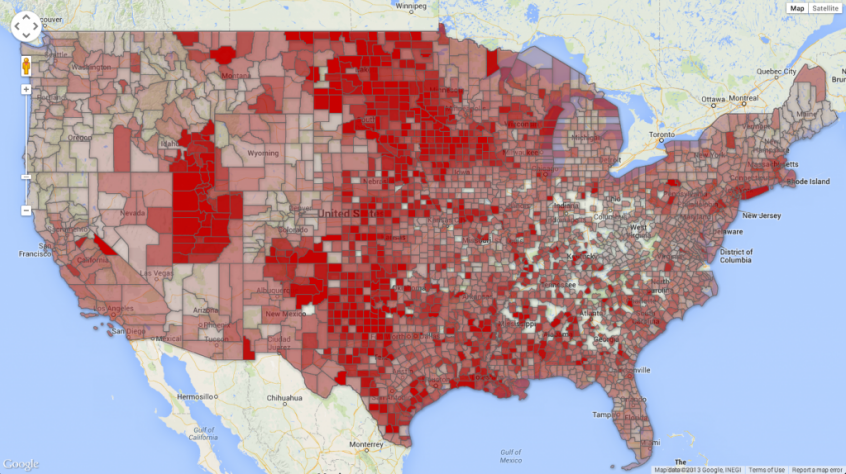
3. Islam takes the number 2 spot in 22 states
Islam is the largest non-Christian religion in 22 out of the 50 US states. Notably, many of these states are also ones held strongly by the Southern Baptist Convention. An arc of states with a significant Muslim population sweeps round from Texas, through Florida, avoiding South Carolina (the only state where the Baha'i faith comes 2nd to Christianity), reaching up to Virginia before turning back west around the coast of Lake Michigan and ending up as far west as Wyoming.
This increasing rise in Christian heartlands might soon perk up the attention of many Southern Baptists. Currently, the South East is not marked highly for religious diversity, but if their levels of participation don't increase, that may soon change.
4. Hinduism turns up in the oddest places
When it comes to the other non-Christian religions, most is much as you would expect. Judaism has not strayed far from its American ancestral heartlands, which is hardly surprising given that relatively few denominations actively pursue the acquisition of new followers through evangelism. Most of New England as well as New York, Minnesota, Missouri and Tennessee all show Jews to be the largest non-Christian group there.
Buddhism has spread from its many oddly (some might say paradoxically) wealthier adherents in California and out into Alaska, New Mexico, and as far East as Kansas and Oklahoma.
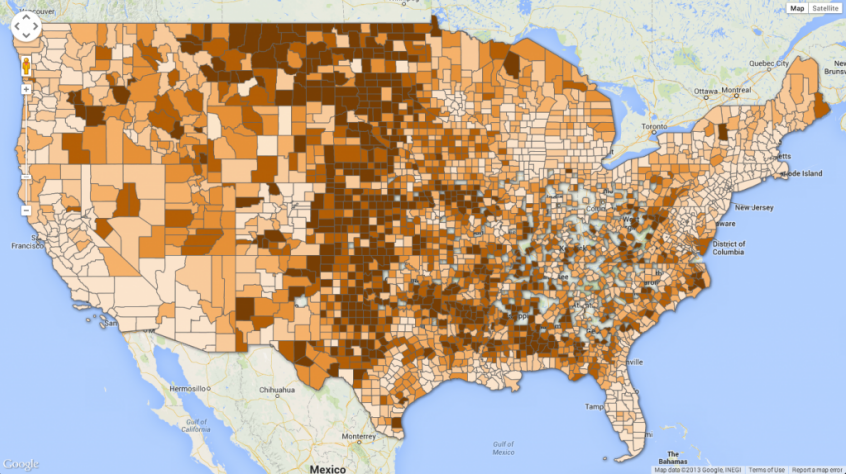
The one common thing about all these groups mentioned so far is that there is a largely contagious movement. Although Minnesota is directly adjacent to no other Jewish dominated state, it is only separated from two of its fellow brethren by Iowa.
Hinduism however bucks this trend. The only two states where Hinduism is the largest non-Christian religion are Delaware and Arizona.
Contiguous blocks of states with a single religion make sense. Ideas often move geographically, just as certain strands of Buddhism, Zoroastrianism, Islam, and Christianity moved along the silk road of central Asia in the dark ages and medieval period.
Yet in an age of mass air travel, where you can span the planet in a matter of hours rather than days, all that is thrown out the window. This is especially true for religions that don't believe in what we in the west would consider conventional ideas of evangelism, transmission is often achieved by other means, in the case of Hinduism producing some unexpected results.
5. Catholics love the melting pot, but don't want to stir too much
Despite America's historical mythos of the heroic British Puritans desperately fleeing the oppression of the quasi-Catholic Anglican Church, Catholics are fairly ubiquitous in America. From the upper North East of Maine, to the depths of South Western California, Catholicism is the largest single denomination in counties all across the US. And where it seen, three other things are noted: a low level of religious participation, with smaller percentages of the total population of a given county identifying as religious, smaller numbers of congregations overall, and higher levels of religious diversity.
This is most pronounced in the western states, with places like Oregon, Washington State, California, western Montana and eastern Wyoming all coming in as very Catholic dominated, with pale beige when it comes to congregation numbers, and hazy pink in participation scores. Catholics it seems are very much a part of the US, but they apparently like to keep quiet about it.











